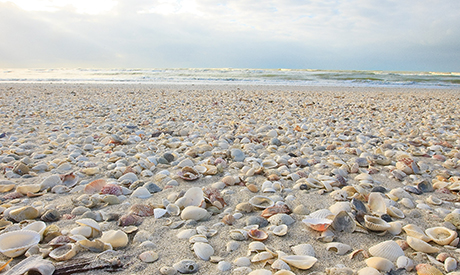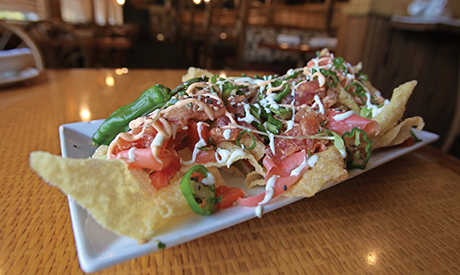Sanibel Island Homes For Sale
Imagine living in a place that has no stoplights, only two-lane roads and the top speed limit is 30 miles an hour. During the times of day when traffic picks up somewhat, a police officer comes down to the busy intersection and directs traffic by hand until the traffic flow lessens. This is what rush hour looks like. Do you think this vision sounds as if it is from Florida’s past?
In a way, you are right, but Sanibel and Captiva islands have managed to retain the slower life people once came to Florida to find. Come out to Sanibel and Captiva, and you could live this life as well.
AREA HIGHLIGHTS
The Neighbors
Older adults; affluent early retirees; professionals; well-educated; affluent; artists; creative; authors; household income double the state median
Market
Waterfront communities; luxury homes; low-rise condominiums; single-family homes; higher-end prices; housing prices four times the state median; median value of homes $648,000; about half of homes valued at $500,000-$1 million.
Lifestyle
Casual; laid-back; coastal lifestyle; nature; boating; golfing; affluent; small town; cultural; artistic; boating; community influenced; active; pedestrian and bicycle friendly; resort-style living; relaxed lifestyle.
You’ll Love
Beaches; boating; access to the Gulf of Mexico; large public parks; nature preserves; swimming; fishing; biking; vibrant community; music; arts; concerts; entertainment; community events; festivals; independent restaurants and pubs; cuisine; independent boutique.
Perfect For
Boaters; golfers; water sports enthusiasts; foodies; shoppers; nature lovers; snowbirds seeking winter homes; people seeking upscale homes
AROUND THE AREA
Located west of Fort Myers and Cape Coral and only connected to the mainland by the Sanibel Causeway, Sanibel and Captiva islands feel as if they are a world away from those bustling Lee County cities where six-lane-wide roads rule. The vegetation is lushly sub-tropical and much of the terrain is still in its natural state. Most homes have yards xeroscaped with native plants so that they require little maintenance or water. The islands are quiet and calm. About 7,200 live on the 16 square miles of Sanibel and Captiva, and the projected population growth rate is around 2 percent. Since the only way on or off the islands by car is the causeway, and reaching the region’s main arteries takes a little while once on the mainland, you need to be on island time if you are headed somewhere. Southwest Florida International Airport (RSW) is about a 30-45 minute drive from the islands.

Originally inhabited by hearty settlers who made their living from the sea and the land, as well as a few who ran an inn that offered hospitality to tourists who made their way across by ferry, the character of Sanibel and Captiva islands changed permanently when they were connected to the mainland by the Sanibel Causeway in the early 1960s. Sanibel incorporated as a city in the early 70s to block developers who wanted to turn the island into the next Miami Beach. The resulting ordinances that restrict building height, among other measures, have helped to retain the rural character of the island. Condominiums do exist on the islands, and rather plentifully, but all are low-rises. Some condominiums even have boating access to the Gulf and docks right behind the buildings. Other housing offerings include single-family homes, homes in boating communities and gulf-front estate homes. Sanibel communities that offer gulf access boating include Caloosa Shores, Sanibel Isles and Water Shadows. Sanibel gulf access condo options include Mariner Pointe and Sanibel Arms.


Sanibel is well-known for its extensive, 27-mile network of bicycling paths that make the island a bicyclist’s paradise. The paths allow bicyclists to travel safely by avoiding the busiest roads on the island. Sanibel and Captiva offer over a half-dozen beach parks and access points. The U.S. Fish and Wildlife Service administers the J. N. “Ding” Darling National Wildlife Refuge. The refuge offers a self-guided automobile tour, a narrated tram tour, as well as hiking and biking paths. A variety of other organizations besides the Fish and Wildlife Service own and administer other pieces of natural land, with the combined result that 70 percent of Sanibel Island has been set aside as a permanent nature preserve. The islands have four golf courses and three marinas. The city of Sanibel Island offers a recreation and fitness center through its parks department. Sanibel also has youth sports leagues.
Shopping is a relaxed but swank experience on Sanibel and Captiva. Boutiques in shopping villages carry merchandise to please well-heeled customers. Even the island’s original store dating back to the early settler days, Bailey’s General Store that is still run by descendants of the original Mr. Bailey, has transformed itself into a gourmet specialty grocery store to cater to the current clientele. The Bailey’s vintage store, complete with packages from its stock of the old days, has been moved to the Sanibel Historical Museum and Village so it is possible to compare the food items to those the store offers today. Restaurants abound, with the vast majority of them local, but a couple of franchises do have locations on Sanibel. Ordinances prohibiting drive-thru windows on restaurants have dissuaded the majority of fast-food chains from opening on the island. Offerings vary from carryout gourmet picnics to sit-down cafes, serving fresh and innovative twists on traditional breakfast and lunch fare to upscale dining. Nightlife tends to revolve around happy-hour performers at restaurants, although a couple of restaurants hire bands to play dance music in their banquet rooms on Saturday nights. An organization called Big Arts stages plays in its Herb Strauss Theater, and it brings members of the Southwest Florida Symphony Orchestra out to perform concerts on the island. It also books concerts with nationally touring performers. The organization offers classes and shows in visual arts as well. Yearly festivals on the islands include the annual Shell Show, Ding Darling Days, various art fairs, Fourth of July fireworks and the Captiva Holiday Village Festival.
Sanibel and Captiva islands offer an affluent retiree community. Residents who are employed primarily work as professionals. Sanibel and Captiva are served by the School District of Lee County, with one school on Sanibel Island serving elementary and middle school students. High school students travel to the mainland to attend school. Florida SouthWestern State College is located in Fort Myers, and Florida Gulf Coast University (FGCU) near Estero serves the entire Southwest Florida region. Big Arts offers many visual and performing arts classes for adults.
